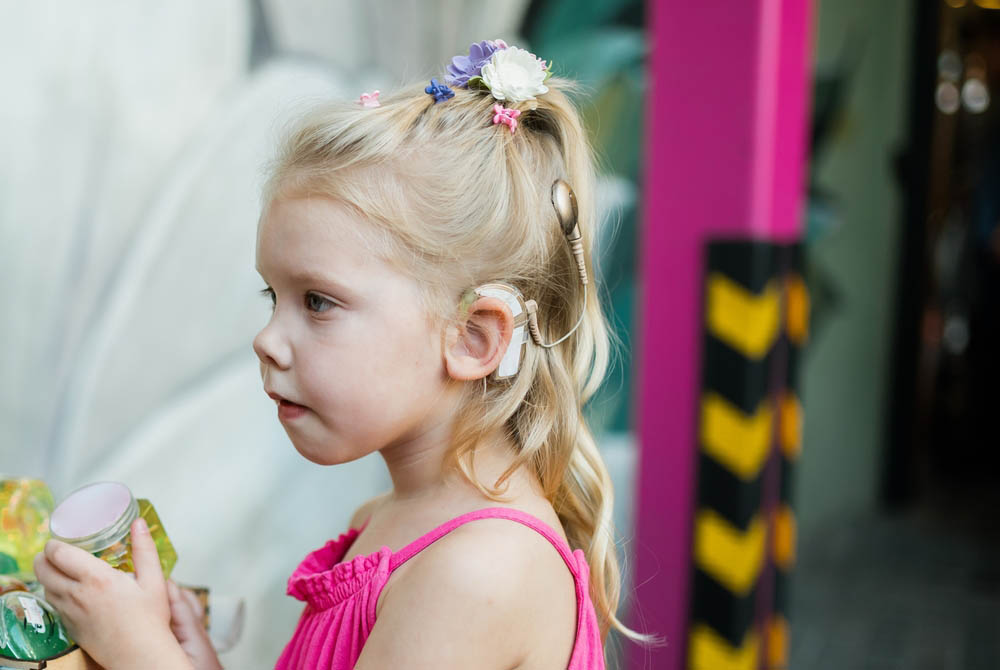Your Child’s Journey: An Ohio Guide for Deaf or Hard of Hearing Support
Transitioning to Preschool

Your child has the opportunity to receive a preschool education when they are three years old. For your child to have a positive preschool experience, it’s good to have any needed supports already in place. Pre-planning for your child’s education in advance is referred to as a “transition process,” and is unique for each learner. For children who might need special education services, this transition process is also called “transitioning into Part B services,” and is part of legislation noted in IDEA.
If your child has early intervention (EI) providers, they can help with the transition process. If your child currently does not have an early intervention provider, a Parent Mentor also is available to assist.
Transition Process at a Glance
- Forty-five to ninety days before your child’s third birthday, you and the early intervention team can begin setting up a Transition Planning Conference, (TPC).
- A Transition Planning Conference is a meeting that outlines your child’s strengths, areas of needs, and available general supports to help your child in their educational setting. A TPC includes you, the early intervention team, and the school.
- You or your child’s early intervention team can contact your school district of residence, informing them that your child has a suspected disability, and invite them to attend the TPC.
- If you want your child to receive special education services for preschool, a referral to your school district of residence is needed. You as a guardian, or your EI providers can make this request. This can be a letter to the special education director, or the principal. The letter should state that because of your child’s disability, you think special education services may be necessary.
- Once the school has received your request, they have 30 calendar days to decide whether to evaluate, and respond back to you. They may agree with you, in which case, they will ask for your signed permission to perform a special education evaluation. An evaluation is required for services.
- However, it is possible they may decline to evaluate, because they believe your child’s disability does not interfere with their ability to learn. If so, they will explain their reasoning, and may offer other options for support, such as a 504 plan. For more information on resolving disagreements, view “Dispute Resolution” in the Evaluation Road Map.
- Please note that a medical diagnosis of hearing loss does not mean your child automatically receives an evaluation, or special services. To receive an evaluation, the school must strongly suspect that your child’s disability may negatively affect their ability to learn and participate in school.
- If you and the preschool do decide to evaluate, you will be asked to sign a consent form.
Within 60 days of receiving your consent, a thorough evaluation of your child will be performed. The evaluation should be in your child’s preferred language and communication mode. - You are a key member of the evaluation team. A professional knowledgeable about learners who are deaf/hard of hearing should be available, such as an educational audiologist, or a teacher of the deaf. These professionals are aware of, and qualified to perform deaf/hard of hearing specific assessments and evaluations.
- The results of all assessments/evaluations will be documented in an Evaluation Team Report. There will be a meeting to discuss the results noted in the report. You may find the Evaluation Roadmap helpful for learning more about the process.
- If your child is found eligible for special education services, the team will begin planning and documenting an Individualized Education Program, (IEP).
- The team will identify where your child’s education services will be delivered. This is known as the Least Restrictive Environment, (LRE).
 Key Considerations for Families
Key Considerations for Families
When preparing for preschool services, families can:
- Create a transition portfolio that includes your child’s strengths, needs, and goals. This can be done with family and your child’s early intervention providers.
- Visit preschools, explore different settings, and ask questions of staff.
Least Restrictive Environment (LRE) and Placement
A part of special education law includes Least Restrictive Environment, or LRE.
LRE means that children with disabilities should learn alongside peers without disabilities whenever possible. Families and the school team are equal partners in the LRE placement process. Placement options may include:
- Public or private general education preschool classrooms (with or without co-teaching).
- Head Start programs (publicly funded preschool).
- Integrated classrooms (a mix of children with and without disabilities, no more than 50% with disabilities).
- Special education classrooms (majority of students have disabilities).
- Specialized schools or programs, such as those for children who are deaf/hard of hearing.
- Home, medical facility, or service provider location, if services cannot be provided in a classroom setting.
These placement options are based on guidance from the Ohio Department of Children & Youth. If you have questions about preschool and special education, contact preschoolspecialeducation@childrenandyouth.ohio.gov
 LRE Considerations for Deaf/Hard of Hearing Children
LRE Considerations for Deaf/Hard of Hearing Children
For children who are D/HH, placement decisions should consider your child’s unique communication and learning needs. Important factors include:
- Your child has full access to their preferred language and communication all day, and in all situations.
- Availability of Peers: Opportunities to interact with other children who use the same language and communication mode as your child.
- Qualified Staff: Teachers, interpreters, and any needed support professionals who are proficient in your child’s primary communication method.
- Use of Assistive Technology: Devices such as hearing aids, FM systems, cochlear implants, and captioning services to support learning.
- Communication Plan: A structured plan within the IEP outlining how your child's language and communication needs will be met. Check out our “Communication Planning Guide,” for ideas.